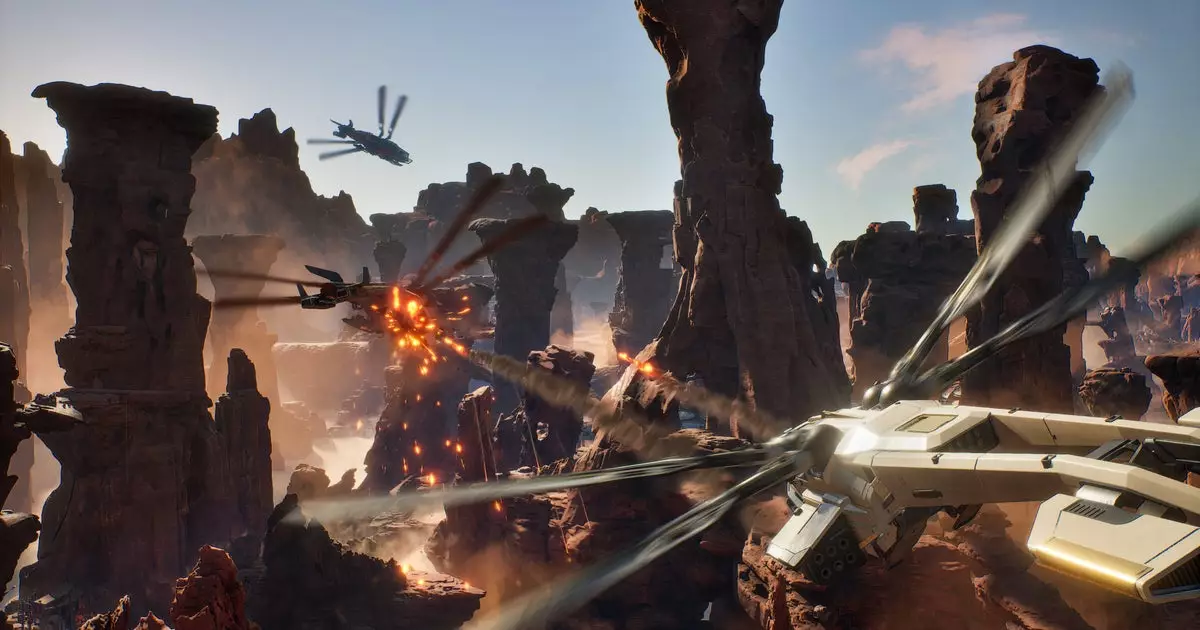The recent rollout of the experimental patch for Dune: Awakening signifies more than just incremental adjustments; it heralds a deliberate attempt by Funcom to reshape the player experience fundamentally. This update isn’t merely about fixing bugs or tweaking stats; it’s an intentional effort to introduce more chaos and excitement into a game that already thrives on tension and survival. From a critical perspective, it’s clear the developers are pragmatically prioritizing elements that enhance player engagement, even if these may veer towards the unpredictable or disruptive. This move toward increasing the scale of player interactions—be it through large blood and water dispersions or swarm dynamics—demonstrates a willingness to embrace the chaos that is so intrinsic to the Dune universe.
While some might argue that such features risk destabilizing gameplay balance, Funcom seems to see these changes as opportunities to foster emergent gameplay. The emphasis on massive blood and water dispersals isn’t just a visual flourish; it transforms the game’s environmental storytelling into something more visceral, more dramatic. However, with these large-scale modifications come questions about unintended consequences, such as resource imbalance or increased griefing opportunities. Nonetheless, by actively encouraging players to test these features, the developers are betting on a community that values experimentation and unpredictability.
Addressing Player Grievances with Purposeful Tweaks
One of the most notable aspects of this update is the targeted mitigation of griefing tactics—specifically, ornithopter swarm behavior. Swarms crashing into each other with impulsive physics to cause chaos or harassment was a persistent pain point. The new collision impulse mechanic aims to curtail such griefing without stripping away the playful chaos of ornithopter interactions. From a critical standpoint, this is a carefully balanced decision: it nerfs the disruptive tactics while still preserving the fun of chaos, which is vital to the game’s core appeal.
Additionally, the developers’ focus on quality-of-life improvements such as the ability to deposit all blood and water simultaneously addresses longstanding community frustrations. While the omission of the mass retrieval of blood feels like a missed opportunity—perhaps a recognition that blood is intended to be more precious or restricted—it still signals a meaningful shift toward more streamlined inventory management. Such small but significant details reflect a thoughtful approach; the devs clearly understand that player convenience can substantially influence engagement and immersion.
Furthermore, the tweaks to the dangerous sandworm encounters—making them deadlier and more threatening—accentuate a more perilous and realistic environment. While this may frustrate overconfident explorers or fast-travelers, it undeniably aligns with the game’s thematic essence: survival against monstrous odds. Being caught in a worm’s animation sequence resulting in instant death boosts the stakes, compelling players to think more strategically, rather than relying on reckless rushing.
Economic Rebalancing and Future Prospects
Interestingly, the patch also features a rebalancing of in-game economic elements—namely, lowering the prices of things like melange spiced beverages and napalm. This shift indicates a deliberate effort to stimulate consumption and experimentation with in-game resources, effectively encouraging players to indulge more freely in the game’s crafting and trading systems. On a personal level, this strikes me as a positive move that adds tangible value to these commodities, making long weekends or leisurely base-building more appealing.
The developers’ proactive communication about upcoming tweaks—aiming for an August 12 deployment—demonstrates transparency and a commitment to ongoing refinement. While some might view this iterative approach skeptically, questioning whether it’s enough or too slow, it’s also a testament that Funcom listens to its community and is dedicated to evolving the game responsibly.
Critically, the approach of testing significant gameplay alterations in a limited environment before full deployment is wise. However, it also raises concerns about how effectively these changes will be balanced in the long run. Will the chaos introduced make the game more enjoyable or simply more volatile? That remains to be seen, but the willingness to experiment signifies confidence—an attribute that many successful live service games lack.
This update for Dune: Awakening embodies a bold step towards creating a more dynamic, challenging, and interconnected universe. It’s an acknowledgment that player feedback and active community participation are crucial for long-term success—yet it’s also a delicate balancing act. If executed thoughtfully, these changes have the potential to elevate the game from a survival sandbox into a relentless, thrilling experience that captures the ruthless spirit of Arrakis.

